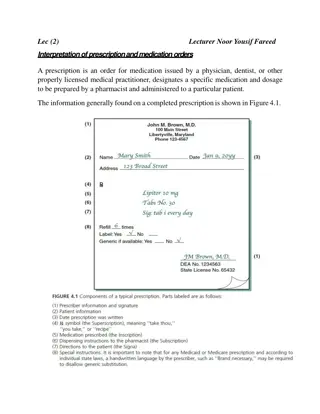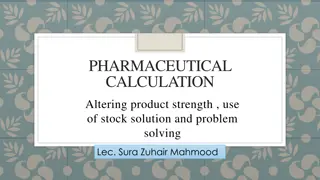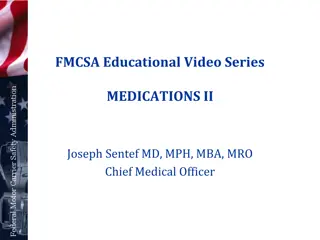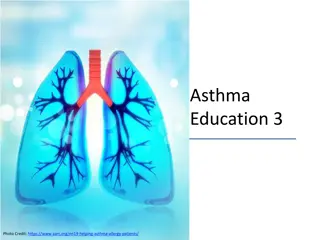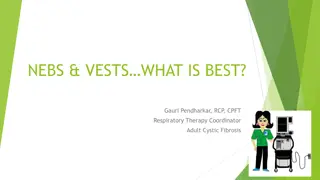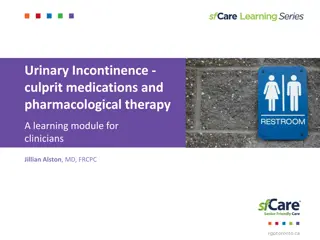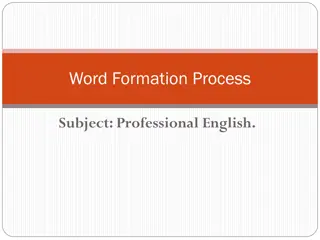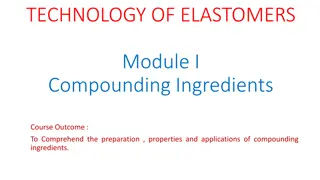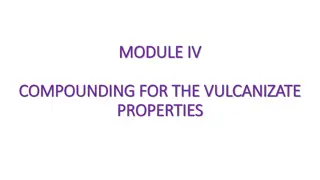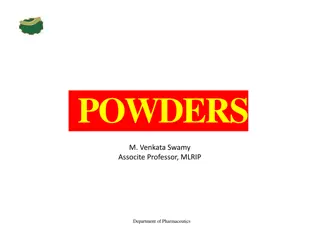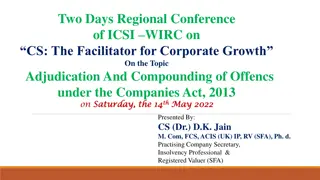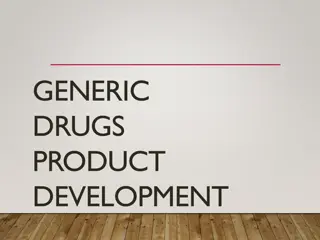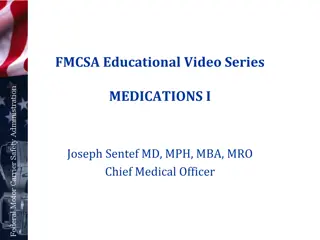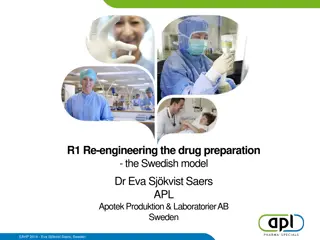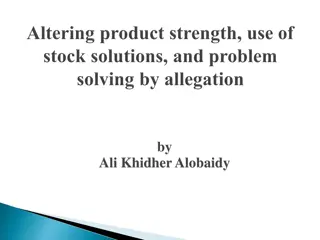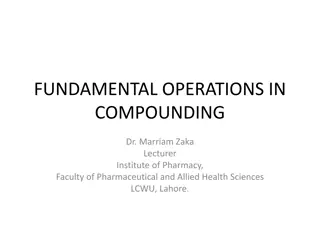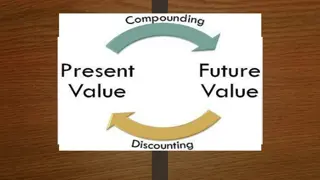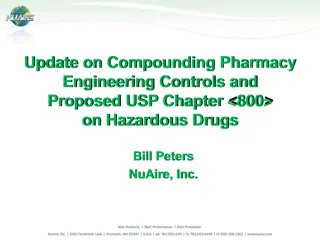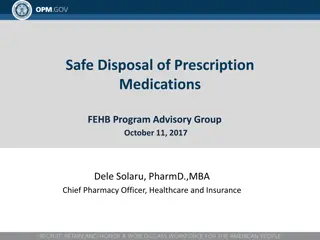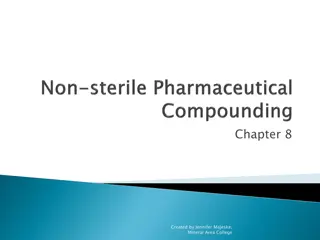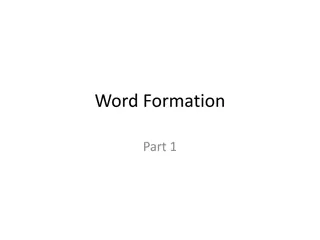Immediate Use Compounding of Medications - Guidelines and Procedures
Immediate Use Compounding of Medications involves preparing sterile medications outside the pharmacy in urgent situations to avoid delays in patient care. This process requires following specific criteria, maintaining aseptic technique, and ensuring proper labeling. It excludes acts like reconstitution or mixing as per manufacturer's directions. The presentation covers defining compounding, identifying appropriate situations, criteria for preparation, aseptic technique importance, and more.
Download Presentation

Please find below an Image/Link to download the presentation.
The content on the website is provided AS IS for your information and personal use only. It may not be sold, licensed, or shared on other websites without obtaining consent from the author.If you encounter any issues during the download, it is possible that the publisher has removed the file from their server.
You are allowed to download the files provided on this website for personal or commercial use, subject to the condition that they are used lawfully. All files are the property of their respective owners.
The content on the website is provided AS IS for your information and personal use only. It may not be sold, licensed, or shared on other websites without obtaining consent from the author.
E N D
Presentation Transcript
Immediate Use Compounding of Medications March 2024
Objectives By the end of this presentation the learner will be able to Define compounding of medications Identify situations where immediate use compounding outside of the pharmacy is appropriate Identify the criteria that must be followed with preparing an immediate use CSP Identify the appropriate environment & importance of maintaining aseptic technique Identify the not to touch critical areas on the medication vials, needle, and syringe Identify proper labeling of the CSP after preparation is complete Defines beyond-use date for CSP s
Compounding of Medications Sterile compounding is defined as combining, admixing, diluting, pooling, reconstituting, repackaging, or otherwise altering a drug product or bulk drug substance to create a sterile preparation. CSP = Compounded Sterile Preparation 3
Immediate Use CSP ! Whenever possible, compounding of medications should be performed in the pharmacy by a pharmacist. In urgent or emergentsituations in which waiting to obtain the compounded medication(s) from pharmacy could cause a delay in patient care and increased risk for patient harm, a trained RN or provider may compound medications aseptically, outside of the pharmacy. Examples: Adding a medication from a vial to an IV piggyback bag Adding a vasoactive medication from a vial to an IV bag of fluid for continuous infusion Preparing syringes in advance in anticipation of use during a procedure. *This does NOT apply to hazardous drugs. Hazardous drugs are to only be compounded in the Pharmacy (ie. Chemotherapy drugs) 4
Immediate Use CSP What is NOT considered Immediate Use Compounding? Immediate Use Compounding doesnotinclude mixing, reconstituting, or other such acts that are performed in accordance with directions contained in approved labeling or supplemental materials provided by the product s manufacturer. Examples: Reconstitution of powder in a vial and drawing it up for administration in a syringe Drawing up liquid from a vial for administration Preparation of t-PA 5
Immediate Use CSP When preparing a CSP the following criteria must be met: Aseptic technique is followed NO hazardous drugs are used The preparation involves not more than 3 different sterile products Any unused starting component from a single-dose container must be discarded after preparation is complete. Administration begins within 4 hours following the start of preparation. If administration has not begun within 4 hours of compounding, it must be promptly, appropriately, and safely discarded. The CSP must be labeled with the following: Names and amounts (doses) of all active ingredients Name or initials of the person who prepared the preparation The 4-hour time period within which administration must begin (beyond-use date) 6
Immediate Use CSP Environment for Preparation Designated area is clean & uncluttered Preparation activities take place on a hard, non-porous surface that can be disinfected At least 3 feet away from a sink o if within 3 feet of a sink, a splash guard is installed to provide a physical barrier between the prep area and sink. Free from sources of contamination, including: o Food and drink o Biohazardous materials (e.g., lab specimens) o Visible contaminants, both non-microbial (e.g., rust, dust, flaking paint) and microbial (e.g., mold/mildew) o Airflow from HVAC vents, windows, etc. o Foot traffic (e.g., near entrance/exit, in busy hallway) 7
Immediate Use CSP Aseptic Technique Principles Aseptic technique refers to the manner of handling, preparing, and storing medications and injection equipment/supplies (e.g., syringes, needles) to prevent microbial contamination and infection To preserve sterility of materials used in sterile preparation of medications, knowledge of what not to touch is important. These not to touch points are known as critical sites and include: o Stopper of vial o Needle Hub, Bevel, Tip, Lumen o Syringes Tip Plunger Inner Shaft 8
Immediate Use CSP Preparation 1. 2. 3. 4. 5. Confirm/review ordered dose of medication and volume & type of IV fluid Designate clear and clean working environment to prepare CSP; disinfect work area per hospital policy Gather all necessary supplies for compounding (medications, IV fluids, syringes, needles, etc.) Handwashing (soap & water) is performed prior to preparation of medication. Disinfect any ports that will be punctured via needle during the compounding process with sterile 70% isopropyl alcohol and allow sufficient time to dry. (vial stopper, IV fluid bag access ports, etc.) Draw up the ordered dose of medication and inject it into the ordered amount of IV fluid bag via the cleaned access port, while maintaining aseptic technique i. Prevent vial stopper coring or glass ampule contamination ii. Visually inspect final CSP to ensure it is free from particulates Label compounded medication with the following: i. Name/dose of ingredients; diluent of IV admixture ii. Initials of the person who prepared the medication. iii. The Beyond Use Date (4 hours from time of preparation) Begin administration of medication within 4 hours of the time of preparation 6. 7. 8. 9
Immediate Use CSP Considerations Plastic caps on vials are dust shields and not intended to maintain sterility of the rubber stopper. Once removed, the rubber stopper needs to be cleaned. 10
Immediate Use CSP Considerations Prevent coring of vial stopper by inserting needle at 45*-60* angle with bevel facing up and away from stopper use sharp needle (not blunt) inspect syringe/vial for evidence of coring, small flecks or pieces of stopper. Prevent contamination from glass ampules. Use a 5-micron filter straw or filter needle. Filter straw/needle should be removed and discarded after use and replaced with the needle one would use to inject into the final solution while maintain aseptic technique Hruska J L, Saasouh W, Alhamda M S (September 29, 2022) 11
Immediate Use CSP Exam Documentation of Competency is required Please scan QR code to take short exam or use the link in the email from Dr. Buscaglia Thank You 12
References <797> Pharmaceutical Compounding Sterile Preparations. USP-NF 2022. November 1, 2022. National Infusion Center Association (NICA) (2021) National Infusion Center Association (NICA). Medication-Preparation-Area-Checklist. Retrieved from: https://infusioncenter.org/wp- content/uploads/2021/01/Medication-Preparation-Area-Checklist_0121.pdf Centers for Disease Control and Prevention. Medication Preparation FAQs regarding Safe Practices for Medical Injections. https://www.cdc.gov/injectionsafety/providers/provider_faqs_med-prep.html. Accessed December 14, 2022 13


